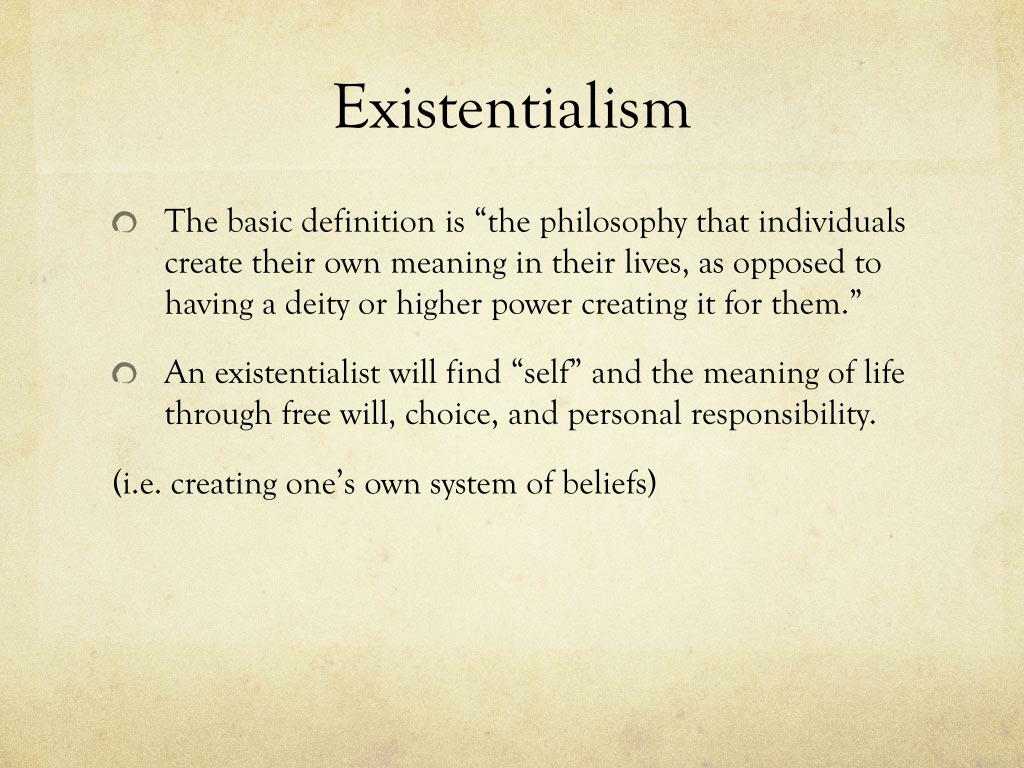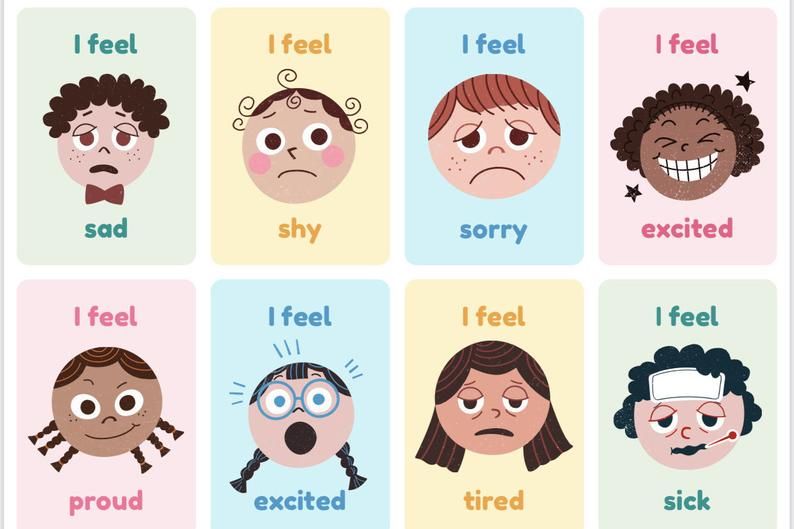Why mothers and daughters fight
Uncovering the root cause of mother-daughter conflict
An experienced counselor recently admitted to me that she felt out of her depth when a mother and adult daughter both came to see her for help with their incessant arguing. She said that she struggled to identify the core reasons for their arguments, and she knew that the communication skills and boundaries she tried to instill in them did not address the core reasons for their relationship difficulties.
Sadly, this counselor is not alone. Colleagues frequently tell me that they feel unprepared when it comes to working with mothers and daughters. They blame the absence of specialized training. This lack of focus on the mother-daughter relationship creates unnecessary anxiety among counselors and psychotherapists, and frustration for female clients. For example, only in 2016 was the Adult Daughter-Mother Relationship Questionnaire developed (for more, see Julie Cwikel’s article in
The Family Journal). And in my office, all too often I hear mothers and daughters voice their frustrations about the lack of specialized help.
In this article, I share two insights that will help counselors understand the dynamics between a mother and daughter of any age. These insights come from the mother-daughter attachment model I have developed through my 20-plus years of listening to thousands of mothers and daughters of all ages from different countries and cultures. The model makes the complicated dynamics between mothers and daughters easy to understand, explains why mothers and daughters fight, and teaches how mothers and daughters can build strong, emotionally connected relationships.
I chose to specialize in the mother-daughter relationship back in the 1990s because that relationship is central to women understanding themselves. My relationship with my mother had shaped who I was, and when my daughter was born 30 years ago, I knew I had to change the harmful themes that were being passed down the generations. What began as a personal quest became my professional mission.
Mothers and daughters frequently tell me that they feel ashamed about their relationship difficulties. They feel that they “should” be able to get along because popular wisdom tells them that mothers and daughters are supposed to be close. This societal expectation makes mothers and daughters blame themselves for causing their relationship difficulties. The truth is, if my years of experience providing therapy are any indication, many women currently experience mother-daughter relationship conflict.
They feel that they “should” be able to get along because popular wisdom tells them that mothers and daughters are supposed to be close. This societal expectation makes mothers and daughters blame themselves for causing their relationship difficulties. The truth is, if my years of experience providing therapy are any indication, many women currently experience mother-daughter relationship conflict.
Based on the inquiries I receive from mothers and adult daughters from different countries, I believe that a larger, societywide dynamic is contributing to their relationship conflict. Often, I hear “hormones” being blamed as the cause for relationship problems, whether it is the teenage daughter’s or pregnant daughter’s hormones, or the menopausal mother’s hormones. Another common reason mothers and daughters give to explain why they are not getting along is their differing or similar personality traits. I have never found hormones or personality traits to be the core reasons for mother-daughter relationship conflict, however. Rather, I have concluded that society sets mothers and daughters up for conflict.
Rather, I have concluded that society sets mothers and daughters up for conflict.
In the first insight, I show that the mother-daughter relationship is not difficult to understand once we realize that mothers and daughters do not relate in a cultural vacuum. In recognizing that mothers and daughters relate within a sociocultural and multigenerational environment, the dynamics between them become easier to grasp. We see how life events, restrictive gender roles, unrealized career goals, and the expectation that women should sacrifice their needs in their caregiving role all shape how mothers and daughters view themselves and each other and how they communicate. To illustrate this dynamic, I share the story of my work with Sandeep, a young college student from England (name and identifying details have been changed).
In the second insight, I explain how patriarchy’s way of silencing and denying what women need is the root cause of most mother-daughter relationship conflict in different cultures around the world. To illustrate, I share my work with Miriam, a doctor from Sweden who comes from a feminist family (name and identifying details have been changed).
To illustrate, I share my work with Miriam, a doctor from Sweden who comes from a feminist family (name and identifying details have been changed).
Miriam and Sandeep come from different countries and cultural backgrounds, and their families are on opposite ends of the women’s rights continuum, yet their core relationship problem is the same. Both Miriam and Sandeep come from families in which women have not learned how to ask for what they need.
Insight No. 1: Mothers and daughters relate in a sociocultural environment
As is the case with any couple, mothers and daughters rarely fight over what they say they are arguing over. Sandeep and her mother were no exception to this rule. Sandeep was a young college student who lived at home. Her parents immigrated to England from India before Sandeep was born. Sandeep had three brothers, but she was the family’s only daughter.
Sandeep came to see me because she was feeling depressed about how critical her mother was. She was struggling to juggle her college work with the housework her mother and family expected her to do. She said her mother would accuse her of not being a good enough “housekeeper” and not caring enough for her mother when she was ill, which was often.
She was struggling to juggle her college work with the housework her mother and family expected her to do. She said her mother would accuse her of not being a good enough “housekeeper” and not caring enough for her mother when she was ill, which was often.
Sandeep had consulted a counselor before me who had suggested that her mother might be suffering from a personality disorder. I never got to meet Sandeep’s mother and work with her clinically, so I was unable to validate whether this might be the case. Regardless, even if Sandeep’s mother did have this diagnosis, it did not provide Sandeep with the answers
she needed.
Instead, Sandeep needed to understand the multigenerational sociocultural environment in which she and her mother lived. She also needed to understand what was going on in this environment that apparently caused her mother to be so angry and critical, and what caused Sandeep and her mother to believe that it was Sandeep’s responsibility to do all the housekeeping.
When I start working with new clients, I map their mother-daughter history. This is the primary exercise in the mother-daughter attachment model. It is an adaptation of the genogram exercise that family therapists use. The maps focus on the three main women in the multigenerational family, which in Sandeep’s case was Sandeep as the daughter, her mother and her grandmother. I map the experiences the three women have had in their lives, including the gender roles that have defined their lives and limited their choices and power. I also map how the men in the family treat their wives and daughters. Mother-daughter history maps provide an in-depth analysis of the multigenerational sociocultural environment in which the women in the family live and what is happening within that environment to cause mothers and daughters to argue, misunderstand each other, and disconnect emotionally. (Detailed instructions on using this exercise with clients are available in my book The Mother-Daughter Puzzle. )
)
Sandeep talked about her grandmother’s and mother’s lives and arranged marriages and shared how verbally abusive and controlling her father and grandfather were. She said the males in the family were encouraged to go to college and build their careers, while the females were expected to stay at home to help their mothers. As Sandeep provided these details, her family’s patriarchal structure came into sharp focus. Sandeep represented the first woman in her generational family to finish school and go to college.
Sandeep’s family believed in what I term the “culture of female service,” a global patriarchal belief system that views women as caregivers, not care receivers. Families that subscribe to the culture of female service expect mothers and daughters to be selfless, sacrificial, self-neglecting caregivers. This belief system does not recognize women as people with needs of their own.
Although I never met Sandeep’s mother, it was apparent to me (based on Sandeep’s descriptions) that she had internalized this family belief and did not know any other way of being. This meant that she did not understand Sandeep’s desire to go to college or her fight for her independence. I suspected that Sandeep’s independence felt threatening to her mother. Several reasons explain why Sandeep’s mother was so critical of her daughter and why she behaved in an emotionally manipulative manner — for example, by becoming ill just when Sandeep was busy with an assignment or exam.
This meant that she did not understand Sandeep’s desire to go to college or her fight for her independence. I suspected that Sandeep’s independence felt threatening to her mother. Several reasons explain why Sandeep’s mother was so critical of her daughter and why she behaved in an emotionally manipulative manner — for example, by becoming ill just when Sandeep was busy with an assignment or exam.
First, Sandeep wanted to live a different life than her mother and grandmother had lived, and this likely made Sandeep’s mother feel alone and abandoned. Her only understanding of being female was that of women as caregivers and of “good daughters” stepping into their mothers’ shoes and walking repeats of their mothers’ lives. Sandeep’s mother had done that, her mother had done that, and she expected Sandeep to follow in that role. I suspect Sandeep’s wish for a different life and different relationships felt like a rejection to her mother. It made her feel that her daughter was criticizing the life and values she believed in as a mother.
Second, Sandeep’s mother could have been jealous of her daughter’s freedom and opportunities, even though she probably was unaware that her criticism and anger were rooted in jealousy. Sandeep’s freedom and opportunities might have been an uncomfortable mirror for Sandeep’s mother, reminding her of the freedom she never had and the dreams she had to relinquish.
Third, the mother’s attempts to keep Sandeep from graduating and leaving home could have been linked to her own fight for emotional survival. Sandeep reported to me that she was the only person who gave her mother love and care, so the thought of Sandeep leaving home must have been terrifying to her mother.
For mothers and daughters to build a strong, emotionally connected relationship, it is optimal for both parties to engage in couples therapy. However, if one person is not able, or willing, to participate, healing is still possible. In Sandeep’s case, her mother did not want to participate in therapy. This did not prevent Sandeep from working on understanding and improving her relationship with her mother, however. When one person changes their behavior, the relationship changes to incorporate the new behavior. Of course, Sandeep and I had little control over how her mother would respond to the changes Sandeep needed in their relationship.
When one person changes their behavior, the relationship changes to incorporate the new behavior. Of course, Sandeep and I had little control over how her mother would respond to the changes Sandeep needed in their relationship.
My work with Sandeep involved teaching her how to listen to her own voice. Sandeep had become an expert on responding to what her mother needed and being a “dutiful daughter,” but she had little idea about what she wanted for herself, beyond finishing her degree. Sandeep did not know how to ask herself what she thought, felt, or needed emotionally because that conversation was not spoken in her family. My role as a mother-daughter therapist was to help Sandeep uncover the sexism she had inherited from her mother and grandmother that had silenced her voice. I helped her understand the gender inequality her family and culture normalized, and I taught her how to claim her own ideas of who she wanted to be and what she needed in her relationship with her mother — and in all her relationships.
I also helped Sandeep navigate the pushback she got from her mother and father when she stopped complying with their demands to be the family’s unpaid housekeeper. I helped her to understand her mother’s and father’s perspectives so that she had empathy for them and encouraged her to recognize that their anger and criticism weren’t as personal as they felt, originating instead from their cultural beliefs. Alongside Sandeep’s increased understanding of her family’s sociocultural environment, I helped her increase her entitlement to speak her mind, reject unreasonable demands, and carve out her own life path.
Sadly, Sandeep’s parents did not react well to her behaving differently from what they expected of a “dutiful daughter.” After Sandeep left home, her family’s anger and accusations that she had dishonored the family became alarming, leading her to obtain a restraining order against her parents and siblings. Through her therapy, Sandeep learned the degree to which her family members did not tolerate women challenging their long-held beliefs about what women could and could not do and could and could not wear. I had to help Sandeep stay safe and grieve the loss of her family even as she gained her own voice and life.
I had to help Sandeep stay safe and grieve the loss of her family even as she gained her own voice and life.
Insight No. 2: Mothers and daughters fight over their denied needs
My clients have taught me that the denial of what women need, especially when it comes to women’s emotional needs, ripples below most mother-daughter relationship conflict. As I write in The Mother-Daughter Puzzle, when a family does not speak the language that inquires after what women feel and need, mothers and daughters are set up for conflict. It creates an either-or dynamic in which the mother and daughter fight over who gets to be heard and emotionally supported in their relationship because they do not know how to create a normal in which both are heard and supported.
In every mother-daughter history map I draw, I see how the silencing of women’s needs harms women’s emotional well-being, limits their ability to advocate for themselves in their relationships and workplaces, and perpetuates gender inequality. I see how this dynamic makes women invisible, and how being invisible makes women hungry for attention. The inability to openly and honestly ask about what they need creates emotionally manipulative behavior between mothers and daughters and sets daughters up to have to mind read their mothers’ unspoken and unacknowledged needs.
I see how this dynamic makes women invisible, and how being invisible makes women hungry for attention. The inability to openly and honestly ask about what they need creates emotionally manipulative behavior between mothers and daughters and sets daughters up to have to mind read their mothers’ unspoken and unacknowledged needs.
Miriam, a client from Sweden, contacted me for help with her adolescent daughter. Miriam and her mother had benefited from the women’s movement fight for women’s rights. Miriam and her mother were doctors, and Miriam’s husband and father were extremely supportive of their careers. But just like Sandeep and her mother, Miriam and her mother had internalized and normalized the culture of female service, and Miriam’s daughter was angry about her mother’s selflessness.
Miriam’s daughter felt that she had to mind read what her mother really felt and wanted, and she was tired of it. She desired an emotionally honest relationship with her mom. She wanted to feel free to say what she felt and needed and for her mother to speak her mind and stop the guessing games. Miriam’s daughter did not want to feel responsible for meeting her mother’s unvoiced and unacknowledged needs.
Miriam’s daughter did not want to feel responsible for meeting her mother’s unvoiced and unacknowledged needs.
The silencing of women’s needs is an intergenerational dynamic that gets passed on from mother to daughter because the mother is not able to teach her daughter how to voice her needs openly and honestly. When the daughter is expected, often unconsciously, to listen for and meet her mother’s unvoiced and unacknowledged needs, the daughter is learning to become an expert on understanding what her mother needs, not on what she needs herself. This means that the daughter will grow up to be as emotionally mute as her mother, thus setting up her future daughter to try to learn to interpret and meet her unvoiced needs.
Women’s generational experience of being emotionally silenced and emotionally neglected is a common theme between mothers and daughters. Happily, I am seeing a huge shift from adult daughters in their 20s, 30s and 40s who are waking up to this patriarchal theme and wanting change. These daughters recognize that they have learned — from their mothers and from society in general — to be far too tolerant of being silent and practicing self-neglect. More daughters are asking their mothers to join them in therapy so that together they can change these inherited behavioral patterns. Mothers and daughters are teaming up and pioneering a new normal in their families — a normal where women are speaking up and demanding to be heard. And they are passing on this new normal to the next generation of sons and daughters.
These daughters recognize that they have learned — from their mothers and from society in general — to be far too tolerant of being silent and practicing self-neglect. More daughters are asking their mothers to join them in therapy so that together they can change these inherited behavioral patterns. Mothers and daughters are teaming up and pioneering a new normal in their families — a normal where women are speaking up and demanding to be heard. And they are passing on this new normal to the next generation of sons and daughters.
Mothers and daughters have always led the call for women’s rights. When we understand that mother-daughter attachment disruption or conflict tells the story of how sexist beliefs and gender role stereotypes harm women’s voices and rights, the mother-daughter relationship becomes an unstoppable force for change at the worldwide and family levels.
Sadly, Sandeep’s mother was not able to join Sandeep in her fight to challenge her family’s sexist cultural beliefs. I inferred that too much neglect made Sandeep’s mother emotionally unable to think her way out of her powerlessness. Miriam, having had a far more supportive and empowering upbringing, was able to join her daughter to find a new normal for women within their family. This mother and daughter team coached each other as they decontaminated themselves from their internalized sexism and self-silencing habits.
I inferred that too much neglect made Sandeep’s mother emotionally unable to think her way out of her powerlessness. Miriam, having had a far more supportive and empowering upbringing, was able to join her daughter to find a new normal for women within their family. This mother and daughter team coached each other as they decontaminated themselves from their internalized sexism and self-silencing habits.
The mother-daughter relationship has tremendous power to change women’s lives around the world. When mothers and daughters band together, they create an impenetrable wall of resistance against family members who are threatened by women claiming their rights. I have had the honor of working with many pioneering mothers and daughters who dared to dream of a reality in which mothers and daughters are no longer starving for attention and fighting for crumbs of affection. These brave mothers and daughters recognize the harm that patriarchy, sexism, and gender inequality inflict on women, and they have decided that enough is enough. In essence, they are saying, “With us, it must end.”
In essence, they are saying, “With us, it must end.”
****
Rosjke Hasseldine is a mother-daughter relationship therapist, author of The Silent Female Scream and The Mother-Daughter Puzzle, and founder of Mother-Daughter Coaching International LLC (motherdaughtercoach.com), a training organization. She blogs for the American Counseling Association and has presented her mother-daughter attachment model at professional conferences, on Canadian television, and at the United Nations Commission on the Status of Women. Contact her at [email protected] or through her website at rosjke.com.
Letters to the editor: [email protected]
Counseling Today reviews unsolicited articles written by American Counseling Association members. To access writing guidelines and tips for having an article accepted for publication, go to ct.counseling.org/feedback.
****
Opinions expressed and statements made in articles appearing on CT Online should not be assumed to represent the opinions of the editors or policies of the American Counseling Association.
6 Reasons Why Mother Daughter Relationships Are So Complicated
The mother-daughter relationship is a complicated one. We feel like were at each other’s throats.
As daughters it’s hard to let our mothers give us advice, and our mothers we feel like they want to live our lives for us, make our mistakes, feel our pain for us. It’s a constant competition, and many times, there's constant tension.
RELATED: Why I Never Wanted A Daughter — But I'm Thankful For Her Everyday
What makes a mother and daughter relationship so complicated? Well, we don’t start out this way — as little , we look to our mothers as our futures. We think of our moms as princesses and queens. We follow them around trying to walk like them and say the things they say. We want to wear our hair like them, and dress like them.
We want to wear our hair like them, and dress like them.
But at some point, things shift. At some point our mothers become stressful to us. We no longer welcome their advice. Their wisdom turns becomes inapplicable.
As daughters, to our mothers we become inaccessible. We shut down. They want to be a part of our lives, but they lose their way in. The conflict between mother and daughter often starts with hormones during puberty, but that relationship tension never really ends. But why?
Why can’t we learn to understand where our mothers are coming from when they give us unsolicited advice? Why can’t mothers take a step back and see how they are making their daughters feel.
Take a look at the reasons mothers and daughters often fight below to better understand what causes a rift in the relationship, and so you can recognize the signs and work to make your own relationship with your mother better than ever.
1. Things feel different in your relationship with each other than they were before.

It’s something that we don’t think about all of the time. Moms have lived a life completely different than the one we daughters are living. It’s the same idea as alimony. You can survive on 40,000 dollars a year, but when you were married, you were millionaires. It is not the life to which we are accustomed. Same with mothers and daughters.
Mothers want us to live they way they lived when they were growing up, but the times have changed — the same rules don’t apply now.
Imagine being Cinderella’s daughter. Imagine not wanting to clean your room in THAT household. Imagine her saying, “When I was your age, I had to clean the whole house, cook for everyone, and clean the chimneys!” Or if you bring home a boyfriend she doesn’t like, “When I first met your father, he searched the entire kingdom for me trying my shoe on every other girl until he found me.” It is impossible to live up to these standards.
RELATED: 3 UNCONDITIONAL Life (And Love) Lessons My Daughter Has Taught Me
2.
 Daughters don't understand why moms are so "controlling".
Daughters don't understand why moms are so "controlling". Keeping on theme with our princesses, because we are princesses, imagine being Belle’s daughter. It is unlikely that she is going to tell you that she had an ex-boyfriend that wanted to kill her father, but instead took her captive for years until she finally fell in love with him. She probably also won’t tell you that she had an abusive ex-boyfriend that followed her to her new boyfriends house and fell off of your house to his death.
She has been through things you don’t even think about. Things that really affect her, and the way she approaches her life, and her choices as a mother.
So, when you haven’t spoken to her in a week, and she calls you seven times, its not because she wants to be controlling. She’s probably just checking to see if youre locked in a castle somewhere talking to teapots and clocks.
3. Moms sacrifice a lot to give their daughters the best life possible.
We hear it all of the time. Motherhood is a sacrifice. She is sacrificing things in her own life to raise you. Maybe its her career, maybe its her figure, maybe its her independence. But she has given things up for you.
Motherhood is a sacrifice. She is sacrificing things in her own life to raise you. Maybe its her career, maybe its her figure, maybe its her independence. But she has given things up for you.
There are things she wanted to be in her life. Maybe she wanted to be an actress, or maybe a high powered executive. And even if she is these things, maybe she wants to be kinder, more understanding. Maybe she wants to be more loving. More open. More daring. More careful. You get to do the things she couldn’t, or be the person she can’t. She wants you to have the best life you possibly can.
RELATED: 7 OMG Mother-Daughter BFF Quotes From 'Gilmore '
4. There could be jealousy involved.
Jealousy between mothers and daughters can go both ways. Sometimes we may look at our mothers and think, when she was my age, she was successful at work, she was married to someone who loved her, and she knew exactly what she wanted in her life. I wish I could live up to the example she has set.
She may look you and think, look at my daughter, so gorgeous, so headstrong, she lives her life freely and takes chances. I miss the time when I was as youthful as she is.
Unrecognized jealousy can be a huge cause of tension. We should try and recognize that it is jealousy we are feeling and try to turn it into admiration.
5. Mothers and daughters both feel the pressure.
Mother’s feel a great deal of pressure to be the perfect example for their daughters. They need to show them how to work hard, but also how to relax. They need to show us how to cook and clean, while also teaching us that its not our responsibility to do so, just because were women. They want to teach us how to stay home and raise a family, while also teaching us to go to work and have a career. How to be demure and polite, and still let loose with their friends.
For daughters there is a lot of pressure to live up to our mother’s example. No matter how much we fight, or get mad at them, we idolize our mothers. We want to be who they want us to be. But we struggle because we are also our own people.
We want to be who they want us to be. But we struggle because we are also our own people.
We want them to be proud of us, but sometimes for that to happen we have to make sacrifices. Sacrifices we aren’t always willing to make.
6. Daughters aren't receptive to unsolicited advice.
From the time we are 10 years old until the day we die, we hate unsolicited advice from our mothers. And our mothers love to give it. For them, its protective, they want us to do the right thing, to be the best we can be, so they give tell us the right things to do from their perspective.
Related Stories From YourTango:
Photo Of Mom Working At Cash Register While Holding Her Newborn Baby Stirs Debate
Mom Asks If She's Wrong For Cancelling Christmas At Her In-Laws To Avoid Disrupting Her Toddler's Routine
Why Your Mom Will Always Be Your BFF No Matter How Old You Are
As we get older, it is also a way for them to be part of our lives. They want to be needed. To fill that same role of guidance they played when were 9 years old.
As daughters, it feels like disapproval. It feels like distrust. When were 16 years old and they are helping us through a fight with a friend, or a problem at school, it feels like they don’t trust us to do the right thing. In our 20’s and 30’s when they tell us how to handle a work problem or a relationship problem, it feels like disapproval. They don’t like the way we do things, a condemnation on our past choices.
RELATED: Moms, If You’re Trying To Be A Perfect Parent, You Need To Read This
We all love our mothers. They are the women we emulate. Our role models. They gave us our hearts where we forever hold them inside. They are our first best friends. Our mothers love us always. They guide us and teach us. They tear off pieces of their hearts to give to us, so we can feel their love. We are their last best friends.
Mother and daughter relationships can be tense — we’re always going to bicker and fight, we may march to the beat of different drummers, but we will always walk to the beat of the same heart.
RELATED: My Own Mother Sent Me A Breakup Letter
More for You:
Kaitlin Kaiser is a writer who covers astrology, pop culture and relationship topics.
Sign up for YourTango's free newsletter!
Children fight so much that mom is scared
We discussed this problem with a medical psychologist, researcher at the National Medical Research Center for Children's Health Maria Afonina .
– Let's imagine a situation: there are two children in a family, 10 and 7 years old. Outside the family, the boys act together, but they fight among themselves so that mom is scared.
Reason 1: children fight for their parents' attention
– Each child wants to be the only one in the family. From birth, the eldest child is constantly in the center of attention, and often not only parents, but the whole large family, they admire him, rejoice at his successes, devote all their free time. nine0005
nine0005
With the birth of the youngest, the status of being the only one disappears, the child becomes the “senior”, which provokes feelings of envy, jealousy, a subconscious desire to “return as it was”.
The situation is somewhat different with the younger child. He has never been the only one, he constantly has to share parental love, care with someone else. Of course, he also wants to become the only one for his parents.
These desires and feelings are not always realized by a child, although from many children at the peak of emotions one can hear: “It would be better if you did not give birth to him!” "I wish I were alone!" - and other words frightening parents. nine0005
In such situations, it is important to tell the baby that you love him very much, that you want to be with him, spend time, share important moments.
The feeling of jealousy in the older child often decreases at the moment of the birth of the third baby: finally, he alone has to compete for the attention of his parents, now the middle child has to do it too. It is believed that middle children are in the most unfavorable position - on the one hand, they are commanded by the elders, on the other hand, the baby still gets more attention from the mother. nine0005
It is believed that middle children are in the most unfavorable position - on the one hand, they are commanded by the elders, on the other hand, the baby still gets more attention from the mother. nine0005
Reason 2: children are encouraged to compete Maria Afonina, clinical psychologist, researcher at the National Medical Research Center for Children's Health. Photo: Pavel Smertin
Our society is built on competition and comparison, and this applies not only to adults, but also to children. For example, parents, educators, grandparents constantly say about one: “Such a good fellow! How fast do you get dressed! How well you eat!”
And about the second child, they note that he digs, hesitates, is constantly serious, sad. Such an assessment, even if the parents themselves do not want to compare children, can be perceived by one and the other baby as a comparison, as if someone is better and someone is worse. nine0005
– But this is the favorite method of some older relatives! They find it motivating.
- The evaluation situation is not useful for any child.
The one who gets the most praise gets used to the fact that everything in his life should be appreciated by others.
And if suddenly at some point he is not evaluated, praised, he will feel helpless, will not be able to understand whether he is doing the right thing or not. That is, in order for him to feel confident, he needs a constant external positive assessment. nine0005
A child who is evaluated negatively will get used to the fact that he is a "loser", which will lead to the formation of low self-esteem, a negative image of "I".
A child should be praised for what he is successful in, without comparing with anyone. For example, you should not say: “Pasha got dressed faster than Vasya today.”
It is better to point to specific achievements: “Yesterday you didn’t know how to tie your shoelaces, but today you can already do it, well done”, “Yesterday you had more mistakes in your notebook, but you worked. ” nine0005
” nine0005
It is useful to focus on the efforts, diligence, ability to overcome difficulties, bring the work started to the end, note the interests and inclinations of the child. For example: "It's nice that you are interested in history, doing projects, it's great when a person has an interest and favorite activity."
Reason 3: children feel something like injustice
The feeling of injustice arises in the older preschool age, but is especially acutely felt by adolescents. Of course, with age, this feeling changes, acquiring a more complex structure and other content. nine0005
For example, at the age of six, it would be unfair if someone suddenly broke the rules in the game.
For a younger student, it's injustice when the older one can go out until 11 pm, but he can't.
And it is unfair for a teenager that he has to wash the dishes, while the younger ones do not.
Reason 4: the child is deprived of personal space Photo: Alena Darmel/pexels.
 com
com A very common reason for conflicts is when the younger one is “hung up” on the older one. For example, an older teenage child wants to go somewhere with friends, and parents ask to take their younger brother or sister with them. Or they should go to a New Year's holiday, a concert together. nine0005
Parents act out of good intentions - they think that if the children are together all the time, they will become friends.
But an older child, especially a teenager, already wants to have his own personal territory, and parents should listen to him.
The fact that each of the children has their own activities, interests, social circle and the opportunity to exchange impressions of their lives with each other will only strengthen their relationship.
Time of fights: from three to nine, then less often
The real fights between siblings start when the youngest is able to answer - around the age of two or three. At this age, the youngest child begins to realize himself, to understand and feel his own interests, desires, opportunities. He enters the era of the crisis of three years, the motto of which is the words: "I myself!".
He enters the era of the crisis of three years, the motto of which is the words: "I myself!".
Therefore, if the older brother or sister continues to lead, command, indicate what they should play together, how to spend time, the younger one will start to fight, demanding that his opinion be listened to. nine0005
Fighting will subside a little in elementary school - when children with a small difference in age are already in the same status. Teenagers also have little to share, as well as children with a big age difference.
Children will never name the real reason Photo: RODNAE Productions/pexels.com
Children will most likely name the cause of the fight as some action that actually just became a “trigger”: one child threw a toy, another called something. In fact, the causes of fights are hidden throughout the life of the child. It is clear that if a child is in a stable emotional state, during the day in kindergarten or at school he did not have exciting events, he ate, slept, nothing hurts him, he will not even notice that his brother took his toy or how laughed at him. nine0005
nine0005
And if he quarreled with the children in the kindergarten, he was tired, he didn't feel well, he didn't eat, and he was yelled at by his mother, who returned after a busy day, and she was in trouble at work, a fight would break out much more likely.
By the way, if the mother herself is in a calm state, conflict situations in children will occur less frequently. Just because the children know that they can come up to their mother at any time and discuss something.
Fights, as a rule, happen at the moment when the mother is least ready for it - annoyed, upset when she does not have the resource to communicate with the children. nine0005
During stressful periods in family life - when parents quarrel, someone gets sick or changes jobs, fights happen more often. Emotional contact with the mother is so important for children that if the mother is distracted from the children by something else and it is impossible to return her attention in other ways, the children begin to fight.
It is very important in this situation not to start looking for the “magic button”, after pressing which the child will immediately stop fighting, lying or being afraid of the dark.
I must first assess my condition and see if I can do this now. If the mother's condition is unstable, it is worth looking for an adult assistant to whom you can shift some of your problems, or who will stop fights and talk to the children. nine0005
Fight prevention Photo: Polesie Toys/pexels.com
Step 1: Spend some time alone with your elder
Fight prevention starts the moment you expect your second baby or the moment your baby is born. It is very important for parents to remember that with the advent of the younger, the older child does not automatically become an adult.
It is very important for each of the parents to continue to spend time alone with the older child, and not just the three of us with the baby. It is important that the mother notice the feelings of the older child and recognize that he can be upset and angry, can be aggressive. And this happens not because he is angry or bad, but because he is upset. nine0005
And this happens not because he is angry or bad, but because he is upset. nine0005
A mother might say to an older child, for example, “I can see that you are upset and angry. But now I will feed the little one, and then we will play your favorite game with you.
If this is done constantly, from the very moment the second child appears in the family, most likely, the elder will not fight for parental love so fiercely.
Step 2. Give each child time
Time should be divided according to needs. Naturally, a very young child needs it more than an older child. To the one who is ill, more than to the healthy. A child who has just gone to kindergarten has more than one who has been going there for a long time. A child who has responsible competitions or performances is more than one who does not have them. nine0005
Flexibility is very important, not too rigid rules; on some day someone needs two hours, on another 15 minutes is enough for him.
Step 3. Protecting personal space
Protecting personal space
It is good for all family members to have personal space - not only for children, but also for mom and dad. When you have your own world where you can retire, and you know for sure that no one will break into it, this helps to preserve emotional resources and well-being.
If someone can come and taunt you at any moment - whether you are doing your homework, talking to a friend, or laying out your collection of your favorite cars - this creates a feeling of threat. nine0005
Then you want to protect your personal space.
This feeling of threat is common to all family members, but it becomes especially acute when the child enters adolescence.
If you have already fought Photo: Victoria_Art/pixabay.com
Step 1. Separate the participants
A fight is always an extreme point. But parents should understand that children fight and say unpleasant words to each other simply because they cannot express in another way that they feel bad. A fight is a signal that the child has some kind of internal trouble. And you need to deal with the cause, and not put out the fight as a symptom. nine0005
A fight is a signal that the child has some kind of internal trouble. And you need to deal with the cause, and not put out the fight as a symptom. nine0005
If a fight has already started and the parents see it, it is important to stop it and separate the participants into different rooms.
Step 2. Discuss what happened with everyone
When the participants calm down, discuss the incident with each of them. At the same time, it is important not to look for someone to blame: "Who started it first, why the fight happened." It is important to state the fact - "you got into a fight" - and try to find ways to avoid this in the future.
Prohibitive methods ("If you fight again, everyone will be left without ice cream") is ineffective. nine0005
Children may stop fighting and even get offended and unite against their parents. But avoiding conflicts in the future will not be learned.
Prohibitory measures and any actions of parents on emotions in this situation reflect only the state of parents - helplessness, impotence, irritation, fatigue.
How to teach a child to manage aggression
The child needs to explain the relationship between emotions and behavior. For example, one of the children, having lost in checkers, begins to scatter them, swing at his brother, swear, cry. It is important to accept his feelings, to give the right to them: “Yes, losing is really very difficult, unpleasant ... I even want to scatter everything and beat the opponent ...”
In the future, it will be important to teach the child to enjoy the process of the game itself (for example, from a coup), and not just from winning at the end. You can also teach your child to recognize irritation in advance: “You are already starting to get very angry ... Probably afraid to lose? Do you remember how you scattered all the checkers last time?”
Even these words will greatly ease the experience of the baby. In the future, you can show him other ways of expressing irritation, resentment, anger.
All this can be used from preschool age, complicating the content of the conversation in the course of growing up and developing the child. nine0005
nine0005
It is important to remember that the baby will not suddenly learn to control himself, you should be patient and help him on this difficult path.
In addition, it is important to understand the reason for a particular fight - maybe it was a busy day and the children were just tired, maybe an old grudge makes itself felt or something had to be urgently changed, but the child was not warned about this in advance and he feels deceived .
It is important to teach children to recognize their emotional state. To do this, you need to talk with the children, preferably the next day after the fight, when emotions calm down. nine0005
Active listening should be used in conversation : for example, an adult describes what happened at the time of the fight, naming the child’s emotions (“You are tired, your brother said something offensive or at the wrong time, and you got angry”, “You are tired, brother grabbed your toy, and it seemed very unfair”), and listens to how the children comment on what was said.
It is important to have a calm dialogue, get to the bottom of the incident and call all emotions by their proper names. Keeping the conversation going, you need to figure out how you can act in similar situations without bringing the matter to a fight. For example: “If you are tired, you should not talk, but go to sleep”, “If you are annoyed, it is better to go to a separate room.” nine0005
Active listening involves the parent naming the feelings the children are experiencing (the children may not be able to recognize them all) as well as the feelings the parent is experiencing: "I get very upset when you fight."
Unfortunately, many adults also do not know how to recognize their feelings and do not consider it necessary to sincerely share their own experiences with their children. Of course, children should not be devoted to all the details of personal problems.
However, if parents indicate that they are tired, not feeling well, a little upset, or, on the contrary, very happy, full of energy and strength, this will help children to be more conscious of their experiences and the feelings of another. Which in the future will help you better understand yourself, the reasons for your actions, act not under the influence of emotions and circumstances, but make informed decisions. nine0005
Which in the future will help you better understand yourself, the reasons for your actions, act not under the influence of emotions and circumstances, but make informed decisions. nine0005
“What if we have the wrong children?” Photo: Victoria_Art/pixabay.com
You can talk to children once and there will never be fights again, never happens. New circumstances arise all the time, and until the children learn to control themselves and cope with them, it will take some time.
A separate problem is that parents whose children are fighting start to worry very much.
What will people say?
What if they have the wrong children? nine0005
What if they themselves are wrong parents and raised their children wrong?
In fact, even if children know how to listen to themselves and negotiate, they will be able to restrain themselves in 80% of cases. In the other 20% they will scream or fight. This does not mean that they hate each other, it means that they simply do not control their own aggression. And this must be learned.
And this must be learned.
Additional ways to develop self-control
Some children may benefit from engaging in sports to control aggression. It is important to choose the type of activity individually, based on the characteristics of the temperament, abilities, interests of the child. For some, team sports (football, volleyball, etc.) are more suitable, for others, contact martial arts, for others, classes aimed at relaxation (swimming, yoga). nine0005
Any organized physical activity is a good way to throw out negative emotions, learn to control yourself.
On the other hand, for some of the children, on the contrary, it is easier to calm down and relieve stress by engaging in creativity, work, leisurely walks, calm communication with loved ones.
In each case, the issue of additional classes is decided individually, and there is no single recipe (for example, “martial arts will help stop fights between children in the family”) for everyone. nine0005
nine0005
daughter is fighting. What to do?
- Forum
- Archive
- Helpline
My daughter is 7 years old. And several times she threw herself at me with her fists. The first time I hit her back, before that, with tears in my eyes, I explained to her that it was IMPOSSIBLE to beat my mother ... And today my grandmother called, our girl hit her on the back. So our baby will show her displeasure... WHAT to do? Beat, give back and turn into a scuffle or explain? nine0005
Moreover, at school he is a very vulnerable and shy child, even somewhat withdrawn according to the teacher. At the lessons he answers - he barely bleats. And at home he yells a little. Losing contact with the child.
to go to a psychologist, not to give change. Not everything is going smoothly for the child.
Why are you all up so late. Seven years is a long time for a child. It is necessary to educate from the first year.
Complete ignore. The louder she yells, the less attention is paid to her. And do not give something because of which he yells. And yes, a psychologist. And you too. nine0005
How long ago did this start? Does she have problems at school? Have you tried talking to your daughter?
this is NOT "the baby shows her displeasure" - this is an expression of aggression, a psychologist and a neurologist can help.
The child's psyche is unbalanced, it is impossible to hit back, it gives only a cosmetic effect. We must try to create a more friendly atmosphere at home, take the child to sports, not let the daughter rock herself, try to develop a rational perception of reality, not an emotional one. If you don’t know how to implement all this, then contact psychologists, maybe they will tell you. nine0005
You cry in front of her in vain. She senses weakness in you and in Grandma. And at school, the pepper is clear not at risk. What a sly girl.
I was like that in my childhood) it’s elementary promiscuity, everyone jumped “on their paws” in front of me, give her a good belt, don’t buy sweets and don’t talk. why do you think promiscuity is treated with a belt?.. In my opinion, it is possible to find more humane methods.0255 You don't need to hit back, but grab her hand and tell her firmly: you can't fight, don't you dare raise your hand against your mother!!! To deprive of something (cartoons, sweets)... as a last resort.... Explain, speak...
why do you think promiscuity is treated with a belt?.. In my opinion, it is possible to find more humane methods.0255 You don't need to hit back, but grab her hand and tell her firmly: you can't fight, don't you dare raise your hand against your mother!!! To deprive of something (cartoons, sweets)... as a last resort.... Explain, speak...
Describe some specific situation.. maybe it was necessary to find a compromise in time and move to another level of communication?!
I usually tell my 6-year-old - don't talk to me in that tone, change your tone and I will listen to you.
human methods were applied to me) I sit on my neck, I get impudent (such a character ...
+1 safe effective method
Consequences of upbringing according to newfangled methods - do not forbid anything, when rude - hug, all these three prohibitions up to three years and no more, do not establish the authority of the mother - because. "The most important thing is to always have your own opinion in everything and not agree with anyone" - and so they begin to bear fruit.














